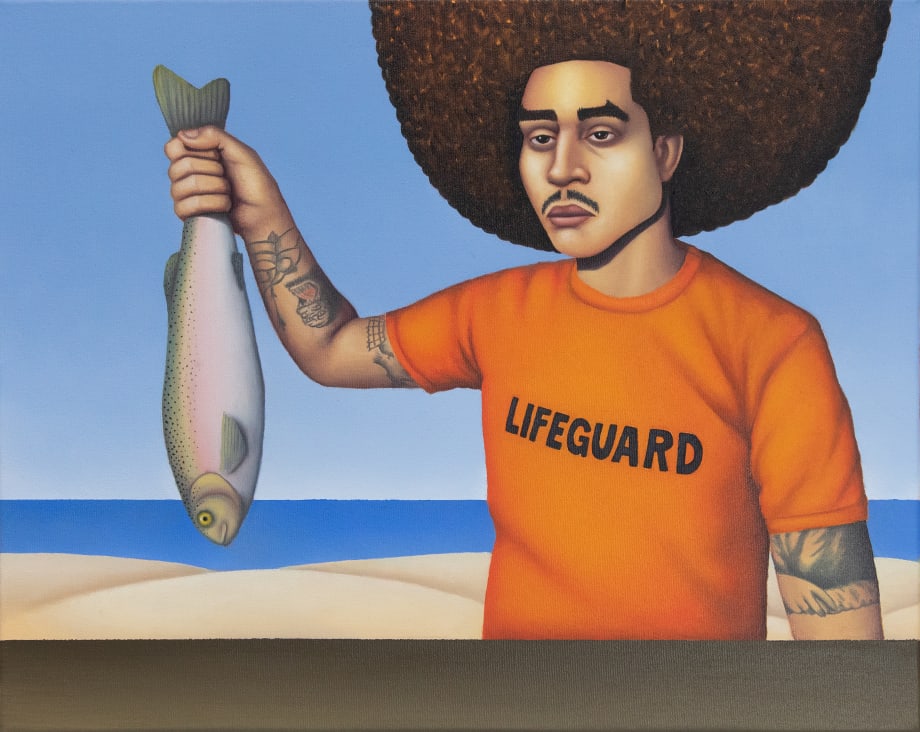Troyli presents a new series of energetic paintings, referential to the titular large-scale multi-figure work which features a series of self-portrait avatars embedded within a succession of interwoven scenes, fashioned with a markedly classicist approach. Utilizing techniques formalized during the High Renaissance, underpainting and toning are central to the conception of each work, beginning with a burnt sienna foundation to establish values. In a timely evolution of his practice, Troyli expands the functionality and influence of his figures, imbuing them with new agency and establishing absurd narratives to consider the timeless conversations surrounding the preconceived notions of identity and value structures.
Through the presence of prop-like iconography and compositions reminiscent of community theater sets, Troyli positions his figures as performing commodities constantly on display. With the titular work, Troyli creates a human formicarium, a continued cycle of labor through which the characters are in a constant state of utility, yet their efforts are futile. The cars seemingly in motion will always remain suspended in traffic, the prop-plane carefully hanging from whisper thin wires will never reach its final destination, and the figures racing to extinguish a blazing fire will never achieve their goal. These strident efforts will forever be in flux.
The additional question Troyli poses is whether or not his subjects are aware of the carefully constructed mise en scene within which they are fixed, as well as the voyeurs they are intended to entertain. Merely spectacles for the audience to enjoy, each figure attempts to establish and perform their given narrative in a way that is just convincing enough to earn the audience’s admiration, with symbols of performance anxiety and vulnerability subtly imbedded within each work.
Presented at a time when the Black body is at the height of socio-political discord, this series of work is not necessarily in response to contemporary unrest, but to an eternal debate surrounding the commodification of Blackness. The images carefully draw viewers in with a comic sensibility, an entry point to critique the capitalist systems that relegate the Black body to be valued as a highly visible yet somewhat disposable form of capital, a legacy of inequality established hundreds of years ago, that still persists today. Troyli’s novel approach creates a platform to engage in the larger conversations surrounding racial discord, Black male stereotypes, and our own roles within these systems.

